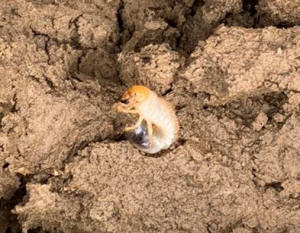|
 Bitter
cold in January likely won’t reduce field crop pests in the spring Bitter
cold in January likely won’t reduce field crop pests in the spring
 Send a link to a friend
Send a link to a friend
[March 18, 2019]
Despite the record cold air temperatures, soil
temperatures averaged slightly warmer than normal this winter.
Consequently, the Arctic conditions are expected to have little
effect on overwintering field crop insect pest populations.
|
|
 A wide range of air temperatures occurred in Illinois this
winter with periods of warmer temperatures in the 60s and 70s
and extreme cold where lows fell to the -30s. Overall,
temperatures averaged 29.9 degrees, 0.8 degrees above normal for
the season. A wide range of air temperatures occurred in Illinois this
winter with periods of warmer temperatures in the 60s and 70s
and extreme cold where lows fell to the -30s. Overall,
temperatures averaged 29.9 degrees, 0.8 degrees above normal for
the season.
Soil temperatures followed similar patterns, according to Jennie
Atkins with the Illinois State Water Survey’s Water and
Atmospheric Resources Monitoring (WARM) Program. Soil
temperatures at 4 inches under bare soil averaged 36.5 degrees
for December, January, and February, which is 1.5 degrees higher
than normal and equal to that of last winter.

Insects not only overwinter in different life stages (egg,
larva, pupa, or adult), but they can also overwinter in
different locations, said Kelly Estes with the Illinois Natural
History Survey’s Illinois Pest Survey.
Some overwinter deep in the soil, whereas others seek shelter in
leaf debris, grass, or under tree bark. Regardless of the
location, though, insects have adapted well to winter
conditions.
[to top of second column] |

Matt Montgomery, Pioneer Hi-Bred Field Agronomist, confirmed this as
he was putting out bait stations on March 12 in Pike County. He
found several soil-dwelling insects that survived the 2018-2019
winter, including this white grub.
Temperatures rose and fell throughout the season with
lows in the single digits and highs in the 50s. The lowest
temperatures occurred at the end of January and beginning of
February when the state experienced record cold weather.
Soil temperatures were below freezing from Jan. 29 through Feb. 2.
However, they quickly rebounded to a statewide average of 37 degrees
on Feb. 4.
Soils have been warming in the second week of March. Temperatures
statewide averaged 42 degrees on March 13 with highs in the 40s and
50s in southern and central Illinois. The northern region remains
cooler with daily highs in the 30s.
[Lisa A. Sheppard] |